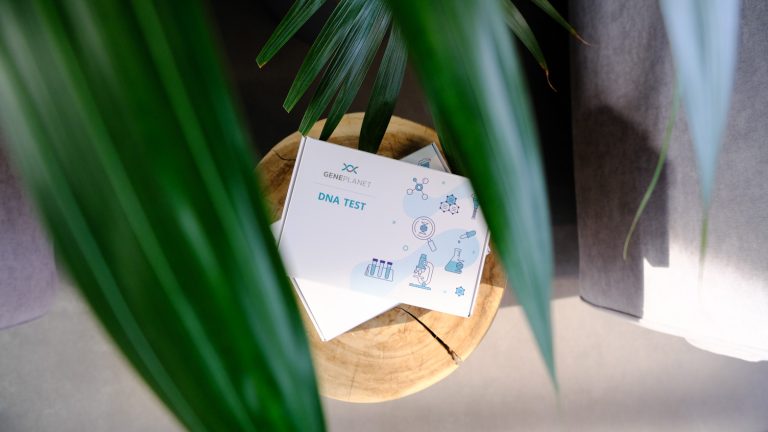Decoding 100% of your DNA means more analyses, the most in-depth interpretation of your genome, and even more knowledge as science progresses.
With whole genome sequencing, you test once and benefit for life.
In 1953, leaning on the foundation set by prior discoveries, Francis Crick and James Watson discovered the iconic double-helical structure of DNA. It marked a tectonic shift in life sciences and eventually enabled us to decipher our DNA.
We’ve arrived at that point 50 years later with The Human Genome Project, the first complete sequencing of the human genome. This monumental achievement was a catalyst for a better understanding of our genome.
Today, we have answers – but they are far from complete. DNA has not revealed all its secrets yet, and new discoveries are being made every day.
While the first sequencing of the human genome cost over $3 billion, today we can do it for a fraction of that price. The advancements, such as next generation sequencing (NGS), have sped up the process and brought it closer to people.
WGS at a glance
Instead of the usual targeted approach – looking at the selected parts of your DNA – we analyse your entire genome.

It allows us to identify a much higher number of relevant genetic variants and give you the most in-depth interpretation. As science uncovers new relevant variants, you can benefit from those insights immediately, without additional testing.
To better understand the scale and potential of whole genome sequencing, we’ll quickly walk you through its scientific background.
The language of genes
A genome represents a living organisms’ entire genetic material. As Crick and Watson figured out, DNA is a ladder-like molecule comprised of two main chains, twisted around each other, and connected by pairs of organic bases (nucleotides). There are four of them in DNA: adenine (A) pairs with thymine (T) and cytosine (C) with guanine (G).
The human genome contains approximately 3 billion of these base pairs, arranged into 23 pairs of chromosomes, each containing hundreds to thousands of genes. Scientists estimate that your cells contain around 20,000 protein-coding genes.
Genome sequencing is a process of determining the order of nucleotides in your DNA. This sequence is unique to each individual and carries instructions for our development and functioning. It represents a blueprint for your body. For example, the “ATCGTT” sequence might translate to blue eyes, while a person with “ATCGCT” will more likely have brown.

Notice that the two variants differ in just one letter (nucleotide)? Such changes are called single nucleotide polymorphism or SNP and are responsible for human beings’ incredible diversity. And WGS is the key to capturing as much of this diversity as possible.
When companies offer you genetic testing, it is important to know which method they use to analyse your DNA, because each has its specifics and limitations.
The targeted approach
It is used by the majority of home DNA test providers on the market and analyses just a fraction of your genome – less than 1%. It targets the panel of genes shown to have a strong association with lifestyle traits. The targeted approach produces less data, which is easier to interpret, but its limited testing range is doomed to miss relevant genetic variants.
Whole genome sequencing (WGS)
WGS maps 100% of your genome – coding and noncoding region (exons and introns). Mapping your entire genome, around 3 billion DNA base pairs, allows us to detect and analyse a much higher number of relevant genetic variants and give you the most in-depth interpretation of your DNA.
Because noncoding parts of DNA carry no instructions for making proteins, they were considered “junk DNA”. But recent discoveries have revealed that the noncoding DNA contains important genetic elements which can help us better understand the cause and development of diseases.
That is why having your entire genome sequenced is such a benefit. No matter where in your genome – coding or noncoding region – scientists discover something valuable, you already have it mapped out. The only thing left is to interpret it and, you can use the newly-acquired knowledge to your advantage!
WGS produces vast quantities of raw data, requiring capable algorithms to translate the long sequence of nucleotides into valuable information. But this effort pays off because it enables us to identify all the relevant genetic variants that science has identified up to date.
But WGS has another ace up its sleeve …
The more we learn, the more you know
If the targeted approach has cracked open the doors into our genetic code, whole genome sequencing has pushed them wide open.
A WGS test is also a long-term investment; its value is guaranteed to grow in the future. Why? Science keeps expanding its understanding of our genome. We don’t yet know the role of each gene and its variant, but scientists are continuously on the hunt for new insights.
As they uncover new relevant variants, you can benefit from those insights immediately, without additional testing!
Advanced method, simple sampling
The science behind home WGS DNA test might be complicated, but your part of the process is simple. To analyse your entire genome, we only need a saliva sample.
When you order our DNA test, you receive a saliva-based collection kit with detailed instructions for taking a DNA sample. After that, the only thing left is to ship the sample and wait for the results!
Choose our Premium DNA test and let it reveal the full potential of your genetic landscape!
Sources:
https://www.nature.com/scitable/topicpage/discovery-of-dna-structure-and-function-watson-397/https://www.sciencehistory.org/historical-profile/james-watson-francis-crick-maurice-wilkins-and-rosalind-franklinhttps://www.genome.gov/human-genome-project/Completion-FAQ#:~:text=Each%20chromosome%20contains%20hundreds%20to,an%20average%20of%20three%20proteinshttps://www.ncbi.nlm.nih.gov/pmc/articles/PMC6861594/#:~:text=In%20contrast%20to%20whole%2Dgenome,reduced%20costs%20and%20data%20burdenhttps://www.nature.com/articles/gim2017247https://www.raregenomics.org/faqhttps://www.ncbi.nlm.nih.gov/pmc/articles/PMC2768590/https://www.scientificamerican.com/article/hidden-treasures-in-junk-dna/

















